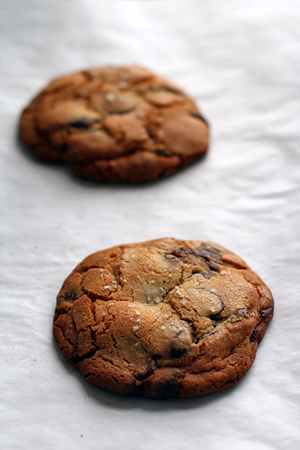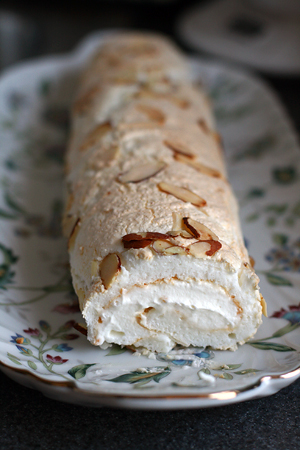

My boss bit into a cookie, looked at it thoughtfully and said, "this might be the best cookie i've ever had." It was good: crunchy at the edges and chewy in the middle, with strong chocolate and butterscotch flavors and a hint of sea-salt.
Are they worth the 36 hours of resting time? I'd say yes, provided that you follow the directions exactly. The ingredients, size, and technique make the cookie.
All-purpose flour will not yield the same results as the combination of cake and bread flours. Since chocolate is the featured flavor, it's important to use good-quality chips/discs/feves. I prefer using thin discs of couverture because they melt nicely and stack well within the cookie. Very large pieces won't distribute evenly. Small pieces aren't as prominent or indulgent (this vs this).
If you like small cookies, I wouldn't recommend using this recipe. You'll lose the crunchy/chewy contrast, and the cookies will be done before they're really golden. The original recipe calls for 99g portions, which were best. Ultimately, I settled for 80g portions because they were a little more manageable for one person.
I recommend using a kitchen scale to measure the ingredients and portions. Your cookies will be more consistent, and they'll look uniform and bake evenly. Good cookie sheets and an evenly-heating oven don't hurt either.
This recipe is fairly popular, as is Cook's Illustrated's recipe for "Perfect Chocolate Chip Cookies" and Alton Brown's "The Chewy." Personally, i'm still a fan of David Lebovitz's recipe. I'd make any of those recipes, depending on the occasion and audience.
You can find the New York Times recipe here.

